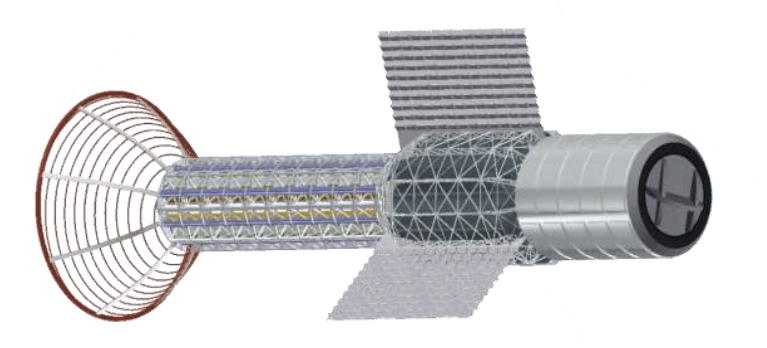We’ve reported on a technology called pulsed plasma rockets (PPRs) here at UT a few times. Several research groups have worked on variations of them. They are so popular partly because of their extremely high specific impulse and thrust levels, and they seemingly solve the trade-off between those two all-important variables in space exploration propulsion systems. Essentially, they are an extremely efficient propulsion methodology that, if scaled up, would allow payloads to reach other planets in weeks rather than months or years. However, some inherent dangers still need to be worked out, and overcoming some of those dangers was the purpose of a NASA Institute for Advanced Concepts (NIAC) project back in 2020.
Originally granted to Howe Industries, a design shop that has received several NIAC grants (including two in 2020 itself), the purpose of this project was to model the design of a fully functional PPR in modeling software to see if the necessary materials and power systems are available for a rocket that can provide 100 kN of thrust and over 5,000 seconds of specific impulse.
In essence, a PPR takes a fuel pellet made out of some form of fissionable material (in this case, uranium), and zaps it into a plasma, then emits the plasma out the back for a forceful thrust. Rockets with this design can carry much less fuel than standard chemical rockets, but their design must be significantly larger due to the heating constraints put on the system by creating the plasma in the first place.
Credit – SciShow Space
Those heating constraints were one of the Phase I NIAC study’s main focal points in 2020. In particular, this study focused on analyzing the barrel the fuel pellet is released into to see if it could withstand the extreme temperatures created by handling a plasmatized uranium pellet.
To do this modeling, the team at Howe Industries used a modeling software called MCNP6 to check where particles went in the system and thereby calculate how much heat would be collected on other parts of the system where it wasn’t desired. MCNP6 uses a Monte Carlo simulation methodology, which calculates where neutrons will be created from the fission reaction that makes the plasma and where those neutrons will impact the rest of the spacecraft.
Those plasmas would have to be created about once every second, according to the calculations done by Howe Industries, and each pulse must reach an energy level of around 1 keV – much smaller than industrial-level nuclear fission reactors but a relatively high number for a spacecraft propulsion system. That energy is turned into heat, and while some of the heat is effectively used to eject the plasmatized uranium out as a thrust propellant, the rest is absorbed by other parts of the system.
Credit – Interstellar Research Group YouTube Channel
The barrel was a part of that system that is particularly important in these thermal calculations. The modeled barrel was made out of low-enriched uranium but of a different type than the projectile, allowing the energy to heat the projectile and not the barrel itself. However, a small part of the barrel would be made of highly enriched uranium, allowing for rapid plasma propagation in an otherwise relatively stable system.
That’s not to say that none of the heat generated by the fission reaction would end up in the barrel. Still, by the author’s calculations as part of their final report, an active cooling system should be enough to lower the temperature to a point where at least the barrel itself wouldn’t melt. Other parts of the system, such as the nozzle and a rotating drum that helps handle the fuel pellet, will be modeled in future work.
Additional future work would include building benchtop prototypes of these systems to test them out, though the prospect of working with highly enriched uranium as part of this process seems daunting. However, NIAC hasn’t yet funded a Phase II study of the PPR system, so for now, it is resigned to a nicely modeled project and another step forward in an idea that has plenty of history. Maybe someday, it will find its time to shine.
Learn More:
Howe et al. – Pulsed plasma rocket- developing a dynamic fission process for high specific impulse and high thrust propulsion
UT – Magnetic Fusion Plasma Engines Could Carry us Across the Solar System and Into Interstellar Space
UT – Plasma Thruster Could Dramatically Cut Down Flight Times to the Outer Solar System
UT – Plasma Rocket Could Help Pick Up Space Trash
Lead Image:
Model of the PPR design proposed in the paper.
Credit – Howe et al.

